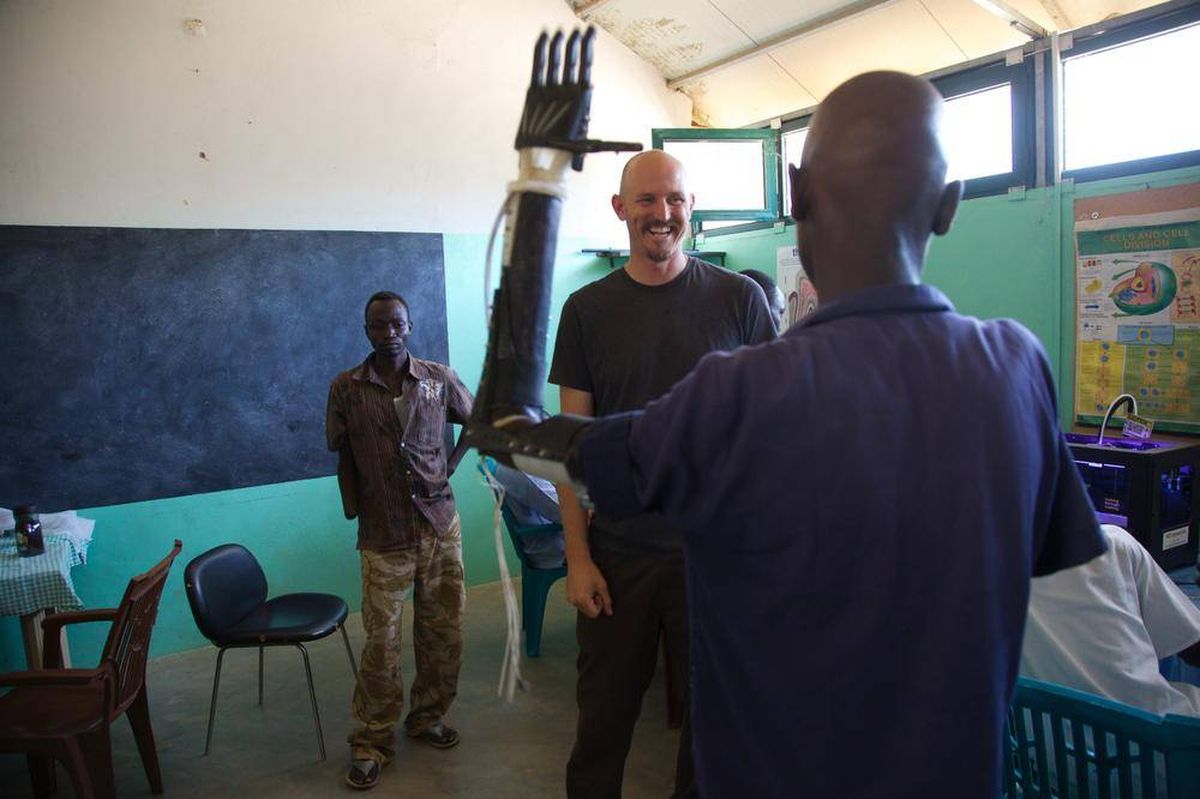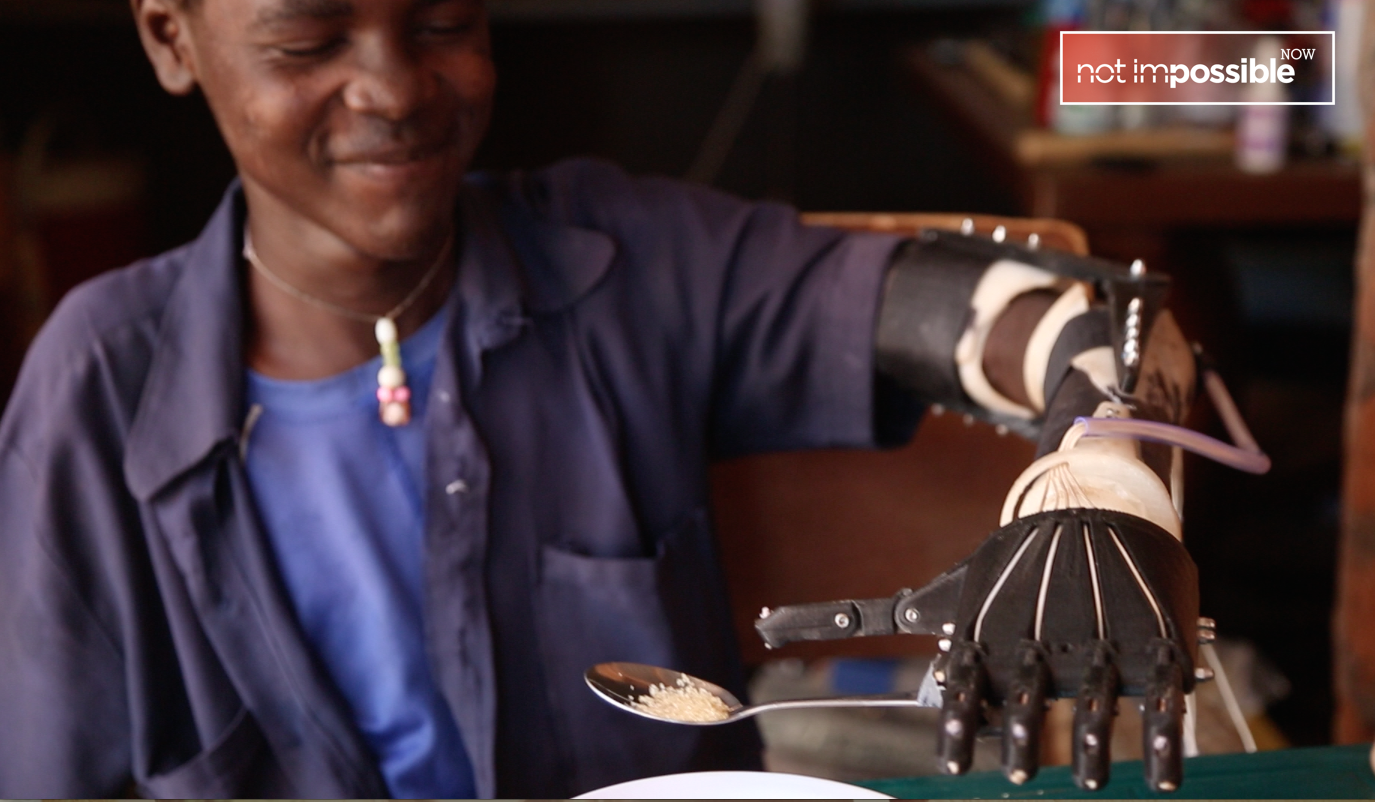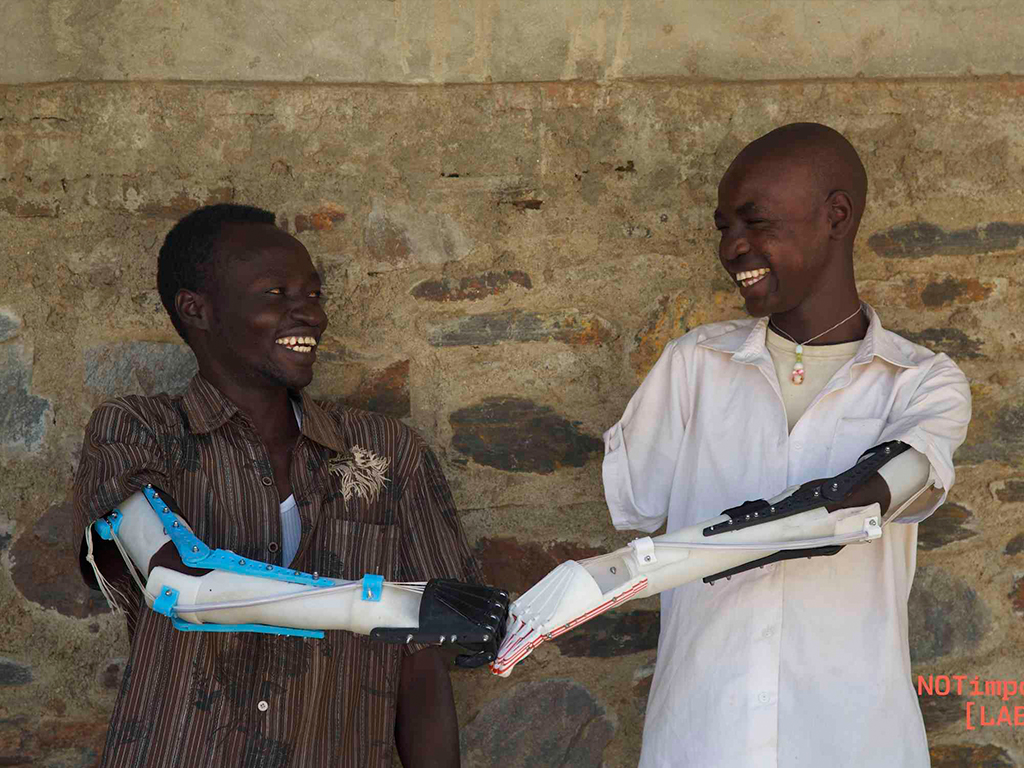How a 3D printer helped a teenager affected by the bombing get a new hand

Translation of an article from The Guardian is made for you Top 3D Shop .
When Mick Ebeling read about a South Sudanese boy who lost both arms, he armed himself with 3D printers and went on a journey to make new limbs for a teenager. Now this project gives hope to another 50 thousand amputees in the country.
In belligerent South Sudan one has to choose: limbs or life. In any case, this is the reality for Daniel Omar. In March 2012, when he was 14 years old, he embraced a tree trunk in an attempt to shield himself from the blow of a blast wave. Moving away he found that he no longer has hands. In the same year, Omar told the Time reporter that if he knew beforehand that he would put such a burden on his family, he would prefer to die that day under the deadly cargo of a military aircraft.
')
Despite the fact that tens of thousands of people lost their arms and legs due to shrapnel wounds during bombing, providing prosthetics is not a priority for South Sudan’s humanitarian organizations.
“ Médecins Sans Frontières is mainly an emergency case organization, ” said David Nash, the main representative of Doctors Without Borders in South Sudan. “ At the moment, the priority is to search for people in need of saving their lives .”
However, David adds that, for the sake of the country's future, access to prosthetics, of course, should also be welcomed.
In November 2013, Mick Ebeling spent a month in Sudan, hoping to find Daniel and make a new hand for him. With him he had printers, plastic reels and cables. 3D printers create plastic parts so that the result looks high-tech, but, in fact, the resulting hand is an uncomplicated mechanical device. The prosthesis works by the fact that body movements involve cables that extend through plastic structures like bundles in a human body. When the user rotates or flexes the remaining part of his limb, the cables are tightened, which leads to compression or extension of the fingers on the prosthesis.
There are situations when such a mechanism cannot be used, since the prosthesis must be attached to a preserved area of the body.
“ With the technology that is currently available to us, it’s difficult to help people whose body is damaged significantly ,” said Elliott Kotek, co-founder of Not Impossible Labs. “ At least something from the limb should remain, for use as a basis .”
But out of more than 50 thousand amputations of South Sudan, many of which are still young, a significant number of people can be helped.
The project was originally called the “Project Daniel”. But it was not clear whether Daniel Omar could be found. The teenager lived somewhere between a refugee camp in South Sudan — a settlement called Ida — and his home in the Nubian Mountains. For a long time these mountains were a disputed territory, where various factions often hostile and government bombings took place.
In addition, there was some concern: even if the guy could be found, would he be interested in such a proposal?
“ We thought: maybe he will not want to accept as a gift a hand from this tall, bald, white-skinned man,” Elliot laughs, turning to Mick. - We do not know, suddenly he and so normal? "

Still, even though Daniel, who is now 16 years old, signed a contract, he seemed like a recluse for a long time - he kept aloof and only occasionally looked at a foreigner who had come from far away in order to assemble for him a new limb. But when the 60-pound prosthesis, which takes several days to fabricate, was finally connected, the guy became inspired.
“ It was amazing to watch this boy come out of his shell ,” says Mick, recalling the moment when Daniel was the first to take a spoon from the day he was injured. “ Helping a guy eat on his own - the intensity of how I experienced this moment reminds me of the days of the birth of my children .”

Another goal of Mick Ebeling's journey was to tell the project to the person he read about in the Time article, Dr. Tom Caten. Tom did the surgery to Daniel and is the only qualified amp amp in a radius of many kilometers. The doctor showed interest in the design, and Mick, leaving South Sudan, left them with the boy inspired by the new idea. However, he still feared that the application of the innovation presented by him would remain a single case.
“ When I flew to Los Angeles and turned on the phone again, I saw a letter from Dr. Caten:“ The guys finished producing two more hands while you were in the air, ”he says.
Since Mick returned home in South Sudan, a new prosthesis is being printed weekly - thanks to the two 3D printers he left there. Machines are buzzing hard - mostly at night, when cool enough for stable operation. The printed parts are assembled by eight locals trained to operate devices, assemble prostheses and customize them for recipients.
The main goal of the team was not to replenish the ranks of organizations that just dump help somewhere and leave the place, says Mick. Not Impossible weekly calls up Tom Catena on the phone and continues to supply plastic for printing prostheses. Daniel easily handles his device, but trust can only be measured in the whole community.
“ At first, these children wanted hands that would match their skin tone, because they didn’t want to stand out ,” says Elliott Kotek, “ but as hands like the prototype first introduced by Daniel gradually spread throughout the community, bold touches of colored plastic began to appear : where is turquoise, and where are shades of pink . ”

Against the backdrop of community hospitality, “Daniel’s hand” becomes a statement - a unifying element: its owners are now bound by their newfound independence.
What do you think about this initiative and its implementation? Can a similar project exist in Russia, and will it be successful? Share your opinion in the comments.
Source: https://habr.com/ru/post/452370/
All Articles